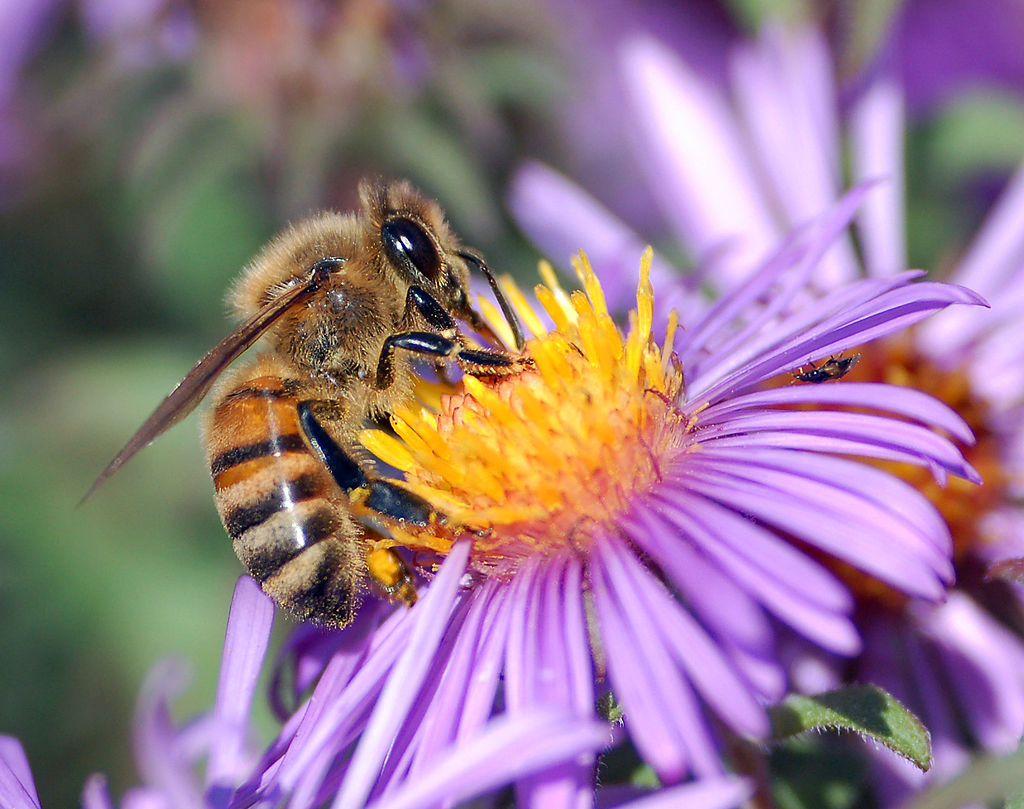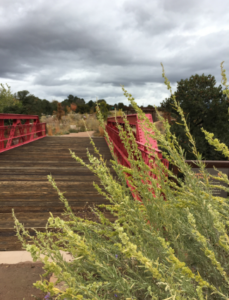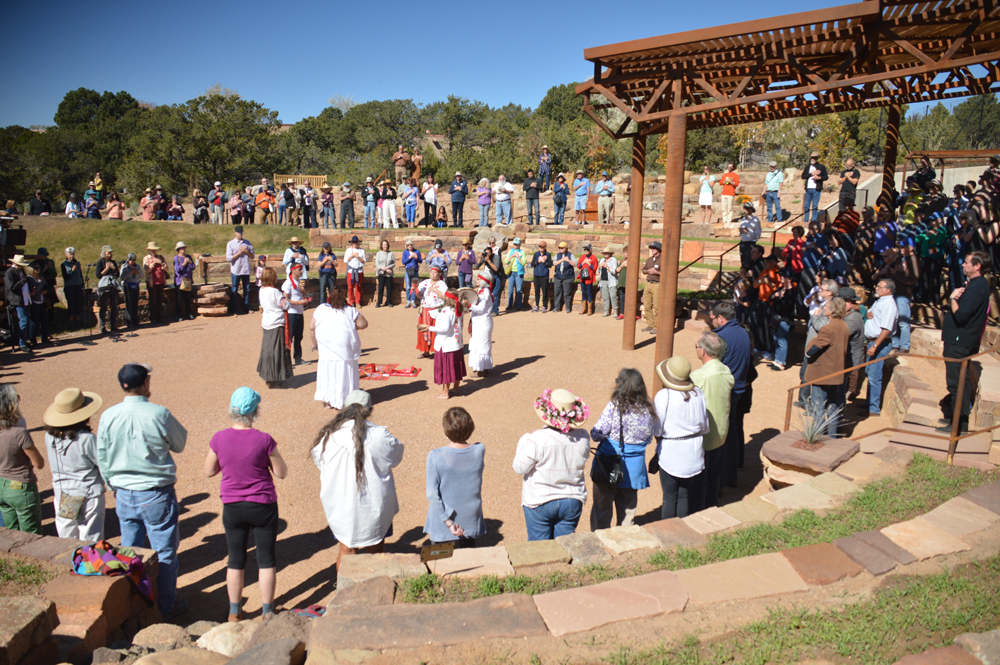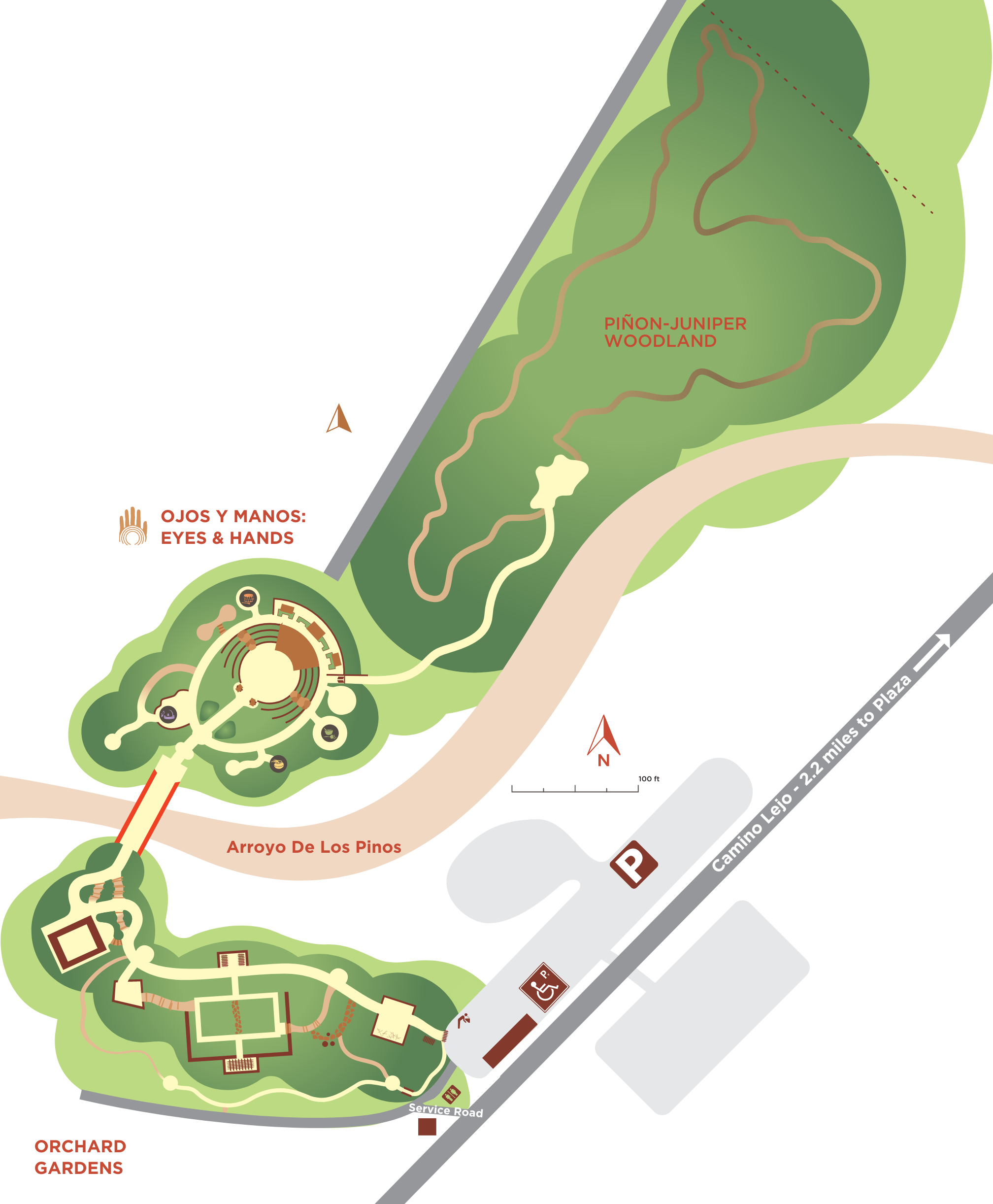Our Mission
The Santa Fe Botanical Garden celebrates, cultivates and conserves the rich botanical heritage and biodiversity of our region.
In partnership with nature, we demonstrate our commitment through education, science, conservation, community service, presentation of the arts, and the sustainable management of our public garden.

Land Acknowledgement
In honor and with gratitude, the Board and Staff of the Santa Fe Botanical Garden acknowledge that the land on which the Garden is sited is the ancestral homeland of the Tewa people. In respect for Tewa people and their traditional lands, referred to as the O’ga poh geh Owingeh or White Shell Water Place in the Santa Fe, New Mexico area. The Tesuque People are direct descendants of the O’ga poh geh. The Garden pledges to steward this land with great respect and humility, as the original inhabitants honored and appreciated the earth which sustained them for thousands of years. The Santa Fe Botanical Garden is dedicated to being model land stewards and is committed to teaching its guests the sacredness of the Earth and its bounty of food and beauty.
Our Gardens & Land
The garden features three main sections:
- The Orchard Gardens
- Ojos y Manos: Eyes and Hands
- Piñon-Juniper Woodland
Visitors enter the Botanical Garden into the Orchard Gardens, which opened in July 2013. The centerpiece fruit orchard is flanked by a meadow garden and a xeric garden.
The orchard is nestled into the hillside, surrounded by a rugged retaining wall on three sides. The Orchard Gardens feature spaces that combine horticultural and architectural elements. Plants were selected for their beauty and ability to thrive in the Santa Fe landscape.
Ojos y Manos: Eyes and Hands, an ethnobotanical garden featuring raised beds for annual crops and an extensive collection of plants with traditional uses; and the Piñon-Juniper Woodland, a natural area showcasing native plants common to the community.
The Piñon-Juniper Woodland, phase three of the Santa Fe Botanical Garden at Museum Hill, adds 3.25 acres of woodland to the visitor experience featuring a gentle walk on a 1/3 mile mulched nature trail loop. With long-distance vistas of New Mexico’s majestic mountain ranges, the Woodland provides a singular opportunity for conservation of a distinctive piñon-juniper woodland environment. In addition, this area provides an inspiring natural setting for discovery, contemplation, and movement along meandering trails.
Kearny’s Gap Bridge
A piece of history from the Bibb Ranch
 A focal point in the Santa Fe Botanical Garden at Museum Hill is the beloved “red bridge,” also knows as Kearny’s Gap Bridge. Built in 1913 for San Miguel County by the Missouri Valley Bridge and Iron Company, the bridge is 62 feet long and 16 feet wide. It is a free-span, steel, subdivided Warren pony truss bridge.
A focal point in the Santa Fe Botanical Garden at Museum Hill is the beloved “red bridge,” also knows as Kearny’s Gap Bridge. Built in 1913 for San Miguel County by the Missouri Valley Bridge and Iron Company, the bridge is 62 feet long and 16 feet wide. It is a free-span, steel, subdivided Warren pony truss bridge.
Kearny’s Gap Bridge The Warren Truss design is recognizable by major cross-bracing along each side of the structure. This design was patented in 1848 but its use was most popular between 1870 and 1900. A NM Department of Transportation survey completed in 1987 reports that there are eight Warren Pony Truss bridges still in service and notes the Kearny’s Gap Bridge as being of historical and engineering interest. The bridge was originally in service along State highway NM 283 which follows the route of the Santa Fe Trail, southwest of Las Vegas, NM.
When the highway was widened and moved to the north, the Kearny’s Gap Bridge was abandoned in its pasture on parcels owned by the children of David Thomas “Dee” and Mabel Bibb and the City of Las Vegas. Well known ranchers and respected as quintessential westerners throughout the area, Mabel is remembered as a civic minded woman who loved the landscape and felt strongly about its stewardship. She collected silver and worked as a silver appraiser, and served on the State Water Board, appointed by Governor Bruce King. Dee was a rodeo star and world champion in the bulldogging event. He is a member of the Cowboy Hall of Fame in Oklahoma City and is recognized at the NM History Museum. His band, Dee Bibb and his Orchestra, entertained many Northern New Mexicans with rollicking cowboy music.
When searching for an “orphaned bridge” in the state, the relocation of the Kearny’s Gap Bridge to the Santa Fe Botanical Garden at Museum Hill seemed a fitting tribute to an iconic New Mexican family.
The Botanical Garden straddles the Arroyo de los Pinos, requiring a pedestrian bridge to connect the gardens to one another. The bridge is positioned across the arroyo with a view of the 1930s Civilian Conservation Corp historic gabion dam, and the long view downstream to the Jemez Mountains.
Piñon-Juniper Woodland
In 2017, the Garden leased an additional 3.25 acres from the state of New Mexico for the development of the Piñon-Juniper Woodland at the Santa Fe Botanical Garden at Museum Hill. The Piñon-Juniper Woodland is directly adjacent to the Ojos y Manos: Eyes and Hands ethnobotanical garden, and its purpose is to preserve and share this pristine ecosystem that is so special to Northern New Mexico. Check back soon for more details!
Take a Virtual Tour of the Piñon-Juniper Woodland
Piñon-Juniper Woodland Defined
Source: Allred, K.W. and R.D. Ivey. 2012. Flora Neomexicana III: An Illustrated Identification Manual.
This is the elemental coniferous woodland type in New Mexico, with numerous associates and sub-types. Associations with Artemisia and Quercus are particularly noticeable. Piñon will occupy the upper, more moist, zones of the vegetation type, with juniper at the lower, more arid, zones, with the species intermingling between. The predominant piñon is Pinus edulis, and the predominant juniper is Juniperus monosperma. Bouteloua gracilis is the common understory grass species. In the bootheel of New Mexico, Pinus edulis may be replaced by Pinus cembroides. Alternative juniper dominants will be Juniperus scopulorum in the northern regions, Juniperus pinchotii to the east, Juniperus coahulensis to the south near the deserts, and Juniperus deppeana to the west in the mountains. Other common shrubs in the piñon-juniper woodland include Atriplex canescens, Berberis haematocarpa, Cercocarpus montanus, Ericameria (Chrysothamnus) nauseosa, Fendlera rupicola, Garrya wrightii, Philadelphus microphyllus, and Robinia neomexicana. As expected, common grasses include species of Achnatherum, Aristida, Bouteloua, Eragrostis, Muhlenbergia, and Piptochaetium fimbriatum under the piñon. Forbs are many and diverse.
Ethnobotanical plantings
Ethnobotanical plantings help make the connection between our rich cultural heritage and the importance of flora in the survival of American Indian and Spanish populations in northern New Mexico.
This second phase of the Santa Fe Botanical Garden at Museum Hill, which opened in 2016, truly presents an unprecedented opportunity to explore the importance of place with local New Mexicans as well as visitors to our unique part of the world.




